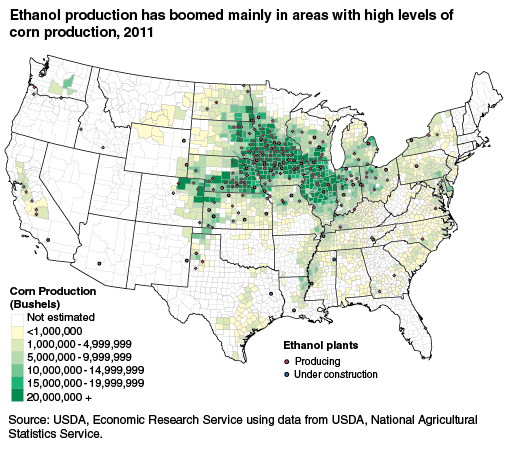Opportunities for rural wealth creation depend on location and timing of investment
- by Economic Research Service
- 11/15/2012

As the location and boom-bust cycle in ethanol production demonstrates, opportunities for wealth creation (in this case, investing in physical business assets) can be influenced by both temporal and spatial factors. The ethanol production boom in the United States was stimulated by rising oil and gasoline prices relative to corn prices, efficiency improvements in ethanol processing technology, and Federal and State government policies that provided incentives for ethanol production. These temporally-specific drivers, together with comparative advantages of particular locations for ethanol processing--favorable access to corn production and transportation infrastructure--led to rapid expansion of ethanol plants in many rural communities, especially in the Corn Belt over the last decade. In rural places lacking these advantages, ethanol production was less likely to be profitable, and efforts to promote it could impede wealth creation. Even where such advantages exist, changes in the temporal context, such as changes in the relative price of ethanol and corn, have reduced profits and caused some plants to go out of business. This chart appears in "Creating Rural Wealth: A New Lens for Rural Development Efforts" in the September 2012 issue of ERS's Amber Waves magazine.

